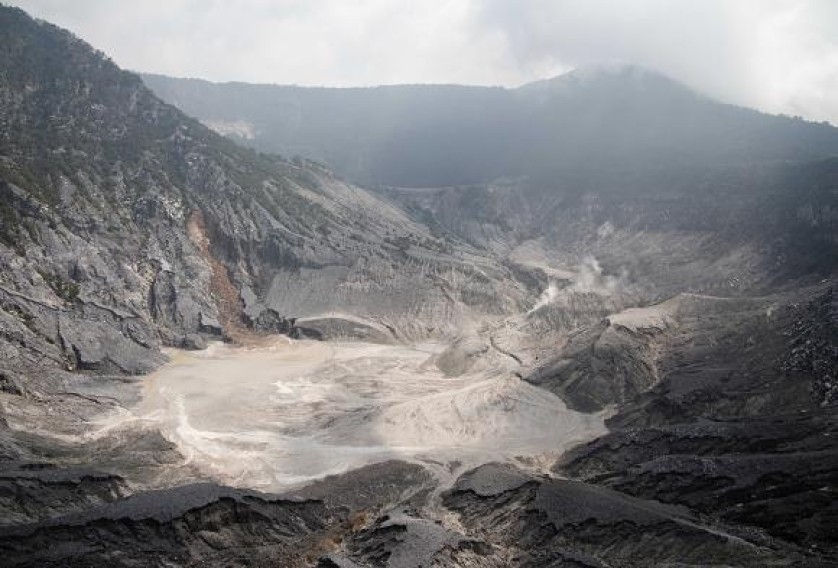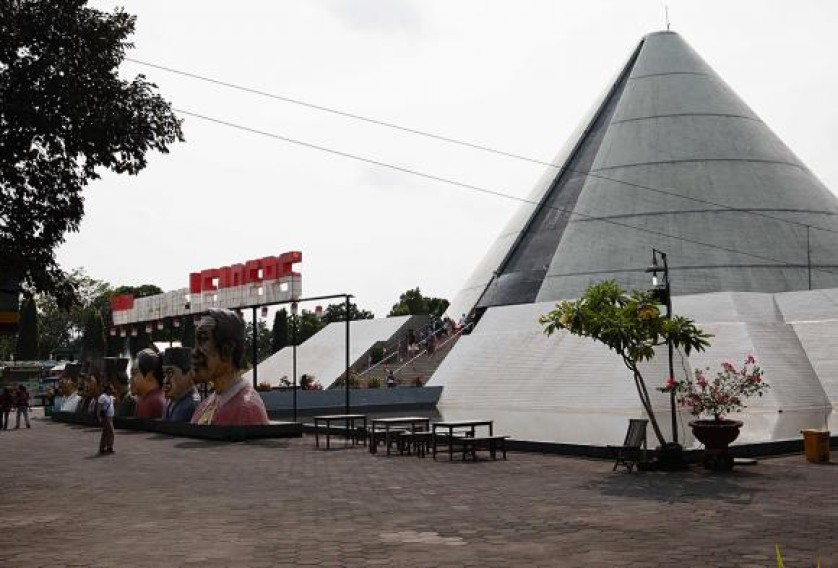Katharina Swoboda
The flight from Vienna via Dubai to Jakarta was trouble-free. The onward trip to Yogyakarta with LionAir, a budget airline, was more problematic: after a delay of several hours, the flight disappeared from the departure board. I spent the hours I had to wait in the sparsely equipped satellite terminal of the domestic airport by following the groups of people that gathered in front of different gates in response to announcements over the PA system. Unfortunately, they did not give an English translation for the Indonesian sentence fragments that obviously stated flight numbers, destinations and perhaps security regulations.
Eventually, I settled in my seat on the plane, exhausted but also strangely proud that I had already managed to find the right gate after twenty hours of travelling.
After the doors of the aircraft closed (“Boarding completed”), there was the next Indonesian announcement. My friendly neighbour translated for me that we now had to wait for another hour aboard the plane.
After a brief groan had swept through the aircraft, everybody relaxed again and ate the dry cookies distributed by the flight attendants. I had more of those cookies several times during my stay. In spite of this negative experience, I travelled again on LionAir – after all there was so much to discover on this island, for example metropolitan Jakarta where Barack Obama spent his childhood. Here I met the most interesting artists and activists and explored the “Chinatown” of Jakarta for my artistic work. I visited Bandung where the Asian-African Conference took place in 1955. A museum informs about the Conference and the attempt of the Global South to develop a position countering the Western powers. Several historical Austrian journals that reported about the event were on display.
In Yogyakarta I was fascinated by the “Monumen Yogya Kembali”, both a monument and museum dedicated to the Indonesian resistance to the Dutch colonial rule and the Indonesian War of Independence (1945 to 1949).
The residency destination of Yogyakarta is situated in the centre of Java, one of the main islands of Indonesia. I have become familiar with the city, but much remained foreign to me even to the very end, especially the people: When does “Yes” really mean “Yes”? Many of my requests were answered affirmatively, promises were made, places and dates were agreed and then the people vanished and, along with them, entire parts of my project. Although somewhat non-committal, the people of Java are incredibly friendly. The Javanese are proud of their culture and customs incorporating animist elements that lend a magical touch to life. Our conversations regularly turned from a social-scientific discourse to an almost mythical interpretation of the world. In this rich view of the world, everything carries meaning. Many discussions took place at the dining table laden with the island’s delicacies and I fell in love with the manifold tastes. Maybe I will return soon and again sit down at an Indonesian table… this reminds me of a poem by Novalis:
If only the sober
once tasted it,
they would abandon all else
and sit with us
at the table of longing,
which is never empty.
| 1. | My stay in one word: |
| Touching | |
| 2. | Things I miss since I am no longer there: |
| Javanese food | |
| 3. | Dos & Don'ts at this place: |
| Always be friendly, do not show when you are angry or impatient. | |
| 4. | Where you can buy great supplies: |
| The best options are small shops that appear unremarkable at first but hold all kinds of things. | |
| 5. | What you should definitely bring with you from home: |
| Time and patience because everything takes a bit longer on Java. | |
| 6. | On art at my residency place: |
| Art presented in galleries is frequently tied to crafts. Moreover, many participatory art projects involving the local community are shown in local exhibitions. | |
| 7. | Around the studio – this is where I go shopping, drink a coffee and get the best lunch specials within walking distance: |
| Shopping is good at the “Superindo”, a big supermarket in the vicinity. And you can get good coffee everywhere in Indonesia! Usually it is prepared in the traditional way. For espresso, there is a small coffee bar near the art university; when you order espresso you get a full mocha pot containing enough coffee for several cups. |
|
| 8. | Where I like to spend the evening (dinner, drinks and best sound): |
| Preferably at various openings and events where snacks and beverages are served in almost all cases. | |
| 9. | What I would have liked to know about the studio already at the start of my residency: |
| I received good information from previous residents. I would recommend everybody to arrange a personal meeting before the residency starts. |
Website resident: katharinaswoboda.net




